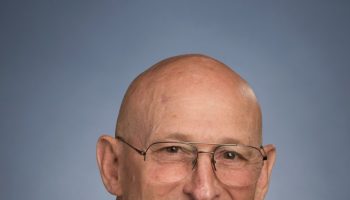
of these revival meetings became annual events; Chautauqua Institution grew from camp meetings held for several years at what was then called Fair Point. Gary Moore will discuss the movement at 3:30 p.m. Tuesday, July 10 in the Hall of Christ.
Long before state fairs, rock festivals and football games brought large groups of Americans together, camp meetings drew thousands of people to outdoor gatherings during the 19th century.
Folks from miles around congregated at these Protestant revivals for preaching, praying, singing, communion and general socializing. Families would pitch tents and camp out for as long as 10 days at a time. The movement started in the late 1700s, and by 1811, there were hundreds of camp meetings across the American frontier. Some of these meetings evolved into permanent, annual events, with cottages and meeting halls replacing tents. Chautauqua Institution itself, founded in 1874, grew from camp meetings held for several years at what was then called Fair Point.
At 3:30 p.m. Tuesday, July 10, in the Hall of Christ, Gary Moore, former professor of agriculture and education extension at North Carolina State University, will present “Meeting to Pray, Play and Sway: The Story of Camp Meetings,” as part of the Oliver Archives Heritage Lecture Series.

Entertaining and erudite, Moore has long been a favorite speaker in the lecture series, covering such diverse historical ground like women’s suffrage and the history of the outhouse.
Camp meetings were religious services organized primarily by Methodists, Baptists and Presbyterians, although the Presbyterians later backed off, believing the meetings had become more an occasion of sin than a cleansing.
The vast majority of Americans in the 19th century lived in rural areas where there were few churches. Traveling preachers developed followings by relentlessly touring.
One such preacher, according to Moore, was Francis Asbury. Asbury was born in England in 1745, quit school at age 12 and started preaching at 17. He became a rural circuit-riding preacher at 21. At 26, Asbury was sent to America by John Wesley, the founder of Methodism.

Asbury was a human dynamo, traveling more than 270,000 miles across the American frontier, averaging 6,000 miles a year, Moore said. Asbury preached almost 16,500 sermons, and the number of Methodists increased from 1,200 to 214,000 in his lifetime. He also ordained more than 700 preachers.
Camp meetings were organized months in advance, and the word was spread far and wide to attract believers and curiosity-seekers. Preachers delivered the word of God to congregants called “mourners” (they were mourning their sins) while novice preachers circulated among them, exhorting them to repent. Seized by the spirit of God, people would sway, drop unconscious, jerk their heads and bodies or roll around on the ground. Dancing, laughing and singing were other manifestations of the divine. Communion was available, but only to those deemed pious enough to obtain a token for it.
By 1811, Moore estimates, as many as 30 percent of Americans had attended a camp meeting. But by 1840, the movement began to decline. Moore attributes this to several factors: churches sprouted up in rural areas as the frontier was settled, the novelty of the experience was wearing off and there was too much unwanted behavior, like drinking and sex. And vendors had descended on many of the meetings, selling all manner of merchandise from booths set up like a carnival midway.
There was a resurgence of camp meetings after the Civil War, Moore said, but the focus was changing. Temperance became a major theme, as did social issues. When Chautauqua began as an assembly for Sunday school teachers, it was denounced by one preacher, Joseph H. Smith, as a “perversion” because he felt it lacked an evangelical emphasis.
A contemporary news report about Chautauqua in 1874 noted: “There is undoubtedly irting, or else it has got down by this time to solid courting. There is a vast deal of that here; you can’t help but meet it everywhere; it is a feature of the place. Croquet helps it along, little excursions by steamer are pleasant, and promenade grounds are to be seen always.
“Of course, there is no suggestion of impropriety in it at all, but I record it as a fact which ought not to be omitted.”
The combination of cultural, educational and recreational pursuits along with religious instruction became the distinguishing feature of Chautauqua. Other sites followed suit, most notably Lakeside, Ohio; Wesleyan Grove on Martha’s Vineyard; Ocean Grove, New Jersey, and Bay View, Michigan.
“A number of them are still thriving,” Moore said. “They’re going great guns. There are also old-fashioned camp meetings in the South, particularly the Carolinas, but it’s like night and day when you compare the facilities and the offerings.”




